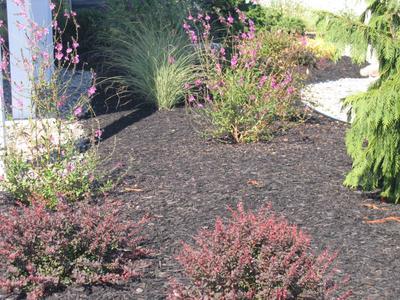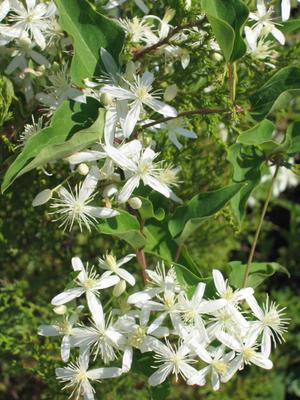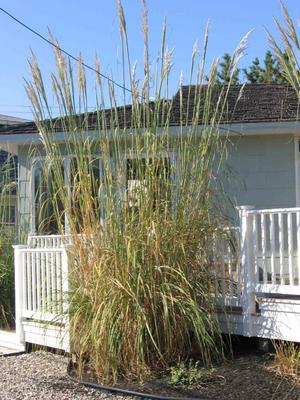I'm lucky enough to be able to spend Labor Day weekends down the shore in Avalon, NJ. (And, it is "down the shore", not "at the beach"). Between lying on the beach, under an umbrella and jaunts in the ocean, I, of course, walk the neighborhood and scout out plants. Here, I present "Avalon's Gardens: Dos & Don'ts".
 A definite do! Switchgrass (Panicum virgatum) is a great choice for the full sun and well-drained soils that dominate the yards in Avalon. This is a grass that you'd find occurring on its own in such a site. (Ignore the exotic boxwood and juniper flanking it).
A definite do! Switchgrass (Panicum virgatum) is a great choice for the full sun and well-drained soils that dominate the yards in Avalon. This is a grass that you'd find occurring on its own in such a site. (Ignore the exotic boxwood and juniper flanking it).
 A definite don't! Japanese barberry (Berberis thunbergii) and purple loosestrife (Lythrum salicaria) are highly invasive! And, what's with the cedar chip fetish?
A definite don't! Japanese barberry (Berberis thunbergii) and purple loosestrife (Lythrum salicaria) are highly invasive! And, what's with the cedar chip fetish?
 Yam-leaved clematis (Clematis terniflora). Looks great, smells nice, invasive. A don't. This photograph was taken in someone's front yard. You know where else I saw this plant? Along the trees of the Garden State Parkway, for miles and miles.
Yam-leaved clematis (Clematis terniflora). Looks great, smells nice, invasive. A don't. This photograph was taken in someone's front yard. You know where else I saw this plant? Along the trees of the Garden State Parkway, for miles and miles.
 Ah no! Chinese silver grass (Miscanthus sinensis) - invasive! (And obnoxiously huge, no?)
Ah no! Chinese silver grass (Miscanthus sinensis) - invasive! (And obnoxiously huge, no?)

To end on a positive note - a joe-pye weed(Eupatorium sp.). A definite do, and quite the looker. Its a great nectar plant for butterflies, and has interesting seedheads in winter.



















